Research
Kulturstiftung Sachsen-Anhalt is responsible for some of the most important monuments and art treasures in the region. Our castles, cathedrals and churches diversely reflect more than 1,200 years of Central German history. That is found not only in the historical buildings themselves but also in individual parts of the original furnishings and unique holdings which are of great scientific interest.
One of Kulturstiftung Sachsen-Anhalt’s main tasks is thus to research into these monuments and their furnishings. The first focus is on the history of the individual buildings; their origins, their use and the manifold changes which have occurred over the centuries. These structures were not just a place where many people lived and worked but also, at the same time, the scene of important historical events. The second focus lies in the collections’ artistic and cultural treasures, covering topics ranging from the Middle Ages to modern times.
This demanding task requires intensive interdisciplinary collaboration. Important cooperative scientific projects have been set up and will be further expanded in the future. Exhibitions and conferences convey the newly gained findings to the public. In addition, outstanding research work is honoured by inclusion in the publication series and the yearbook of the Kulturstiftung Sachsen-Anhalt.
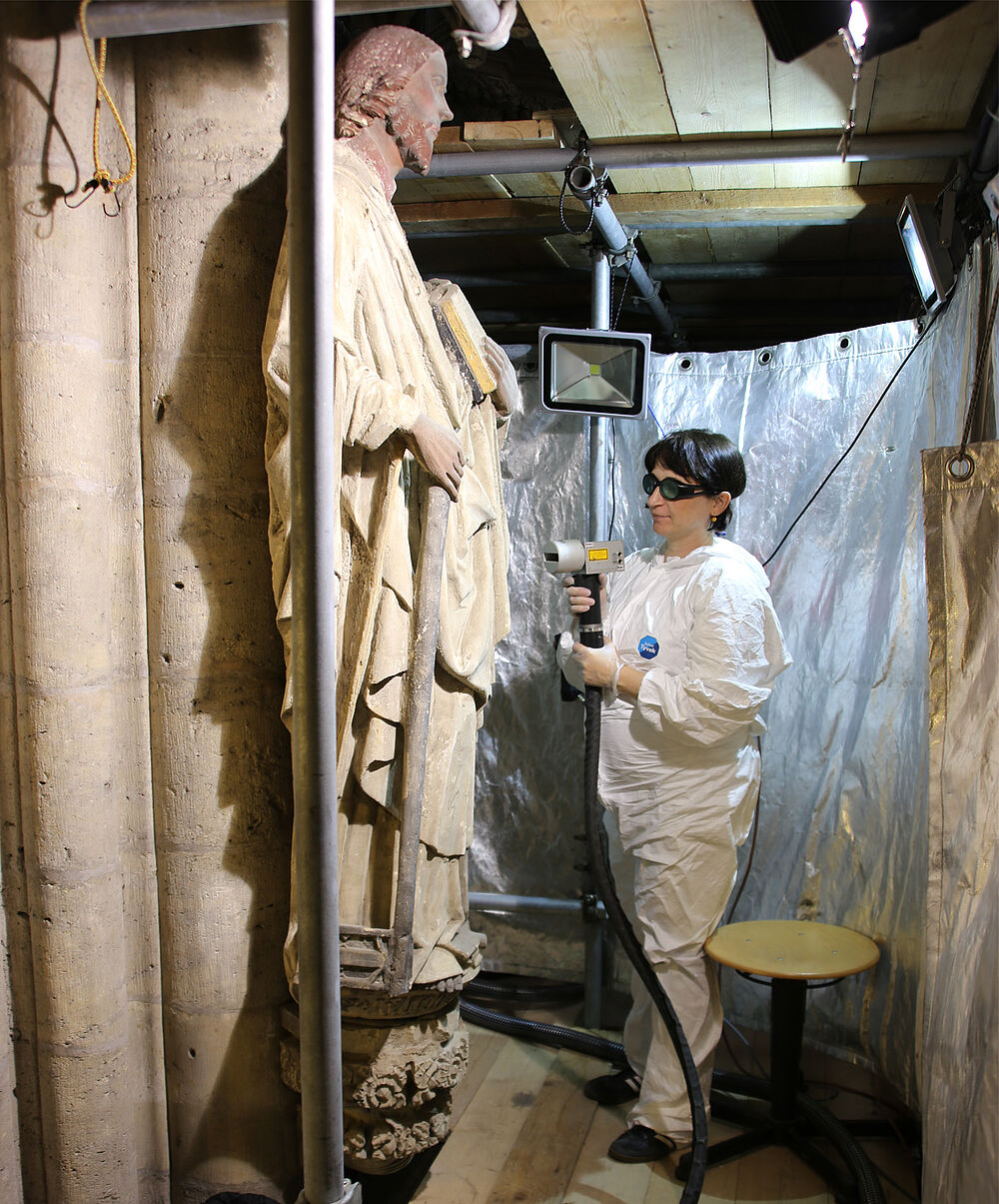
Ongoing Projects
The liturgy at Halberstadt Cathedral in the late Middle Ages
The medieval liturgy of a particular church and the arrangements for the various celebrations throughout the church year, including not only readings, prayers, hymns, and music, but also personnel, vestments, and decorations for the church and altar, were recorded in the so-called Liber ordinarius. It is a kind of “directing book” for conducting Christian worship in a sacred context. A Liber ordinarius from the 14th century has been preserved from Halberstadt Cathedral. The aim of the project is to explore the content of the work, transcribe the text, and identify the prayers and hymns mentioned there in abbreviated form. For this purpose, selected passages are linked to the corresponding texts in the missals and hymnals that have been preserved from the medieval cathedral in Halberstadt. A group of manuscripts is being digitized for the purpose, and the texts mentioned in the Liber ordinarius and listed in full in the manuscripts will be digitally linked. The objects still preserved in the cathedral treasury and mentioned in the Liber ordinarius, such as vestments, relics, and altar vessels, will also be digitally linked. This will provide a unique and immediate insight into the former spiritual life of the bishop's church, reconstruct the sacred topography of the city in the Middle Ages to be reconstructed, and enable it to be traced in the planned digital publication.
Further informations: www.hab.de
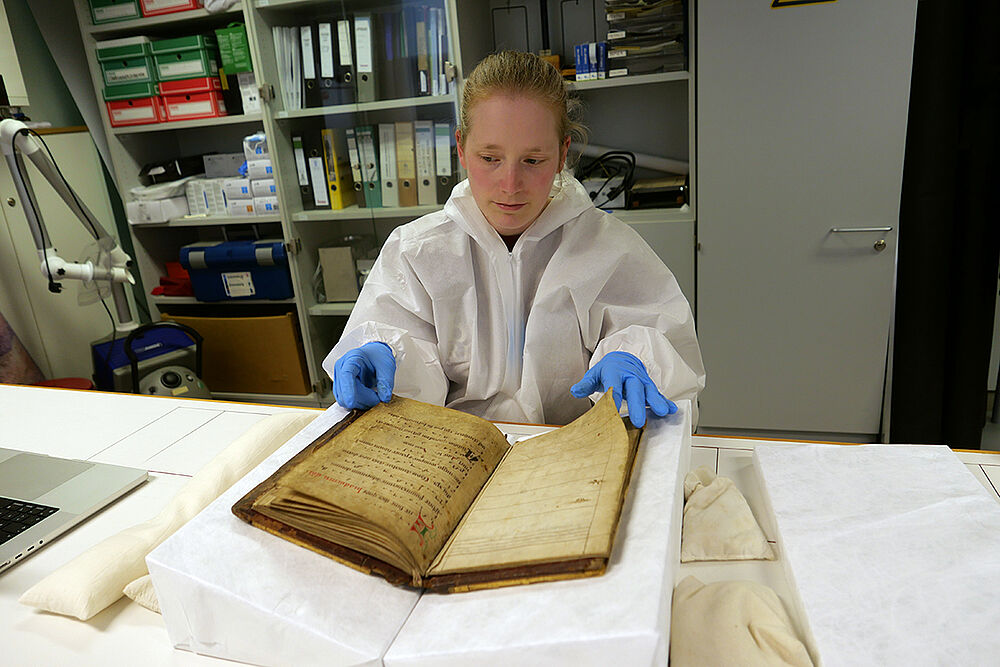
- Project title:
- Worship, art and community. The manuscript of the Liber ordinarius as a key source for medieval Halberstadt.
- Duration:
- 3/2025–2/2028
- Founding body:
- Deutsche Forschungsgemeinschaft (DFG)
- Project mgmt.:
- Dr. Patrizia Carmassi
- Partners:
- Kulturstiftung Sachsen-Anhalt, Herzog August Bibliothek Wolfenbüttel
Inventory of Havelberg Cathedral
Havelberg Cathedral is one of the largest cathedral buildings of the Middle Ages in Germany that has received insufficient attention to date. The diocese of Havelberg was founded in 946 or 948 by Otto the Great. In 968, the diocese was assigned to the newly established archbishopric of Magdeburg. Havelberg and its cathedral were lost in the great Slavic uprising of 983, but the diocese continued to be staffed. In the course of missionary work by the Premonstratensians, the diocese of Havelberg was re-established in 1150 in connection with the campaigns of Albrecht the Bear under Bishop Anselm. Bishop Walo celebrated the final consecration of the new cathedral in 1170. From the late 13th century, the flat-roofed cathedral was gradually converted into a vaulted basilica. Havelberg Cathedral has an extremely rich collection of preserved medieval furnishings. Examples include the choir stalls and the rood screen with its famous sculptures and reliefs. The Westprignitz art-historical inventory from 1909 has long since ceased to fulfill its function as a monument documentation. Therefore, the Cultural Foundation of Saxony-Anhalt and the Sate Office for Heritage Managment and Archaeology Saxony-Anhalt agreed on a complete new inventory of the ensemble and its furnishings. The aim of the research project is a fundamentally new, scientifically sound appraisal of the architecture and furnishings of Havelberg Cathedral, which will result in a two-volume publication. Following the example of the cathedral inventories of Magdeburg, Naumburg and Halberstadt, a further opulent and representative monument monograph will be published at the end of the project.
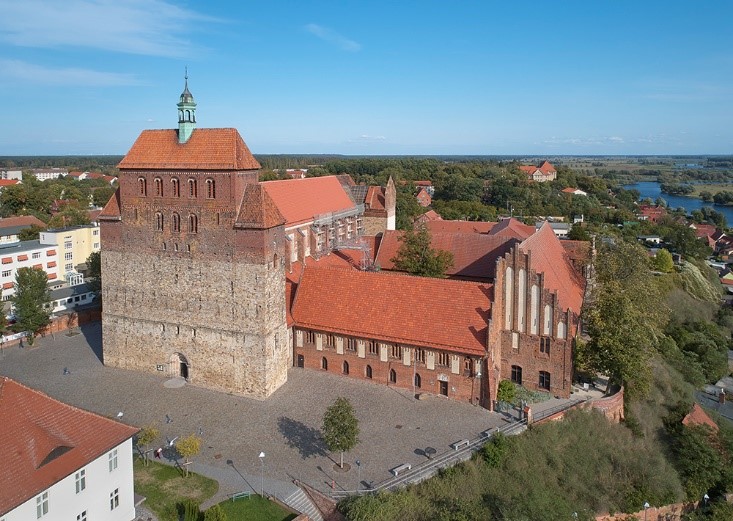
- Duration:
- 2025–2029
- Funding body:
- Land Sachsen-Anhalt
- Project leadership:
- Kulturstiftung Sachsen-Anhalt
- Project mgmt.:
- Dr. Heiko Brandl and Dr. Anja Seliger
- Partners:
- Landesamt für Denkmalpflege und Archäologie Sachsen-Anhalt
- Prignitz-Museum am Dom Havelberg
Documentation and Conservation measures on the tomb of Otto the Great
Emperor Otto the Great died in 973. Since the 13th century his tomb is centrally positioned in the High Choir of Magdeburg's Gothic cathedral. The tomb itself consists of a coffered limestone sarcophagus, which is over 2 metres long and about 60 centimetres wide, that may even date back to the 10th century. An ancient marble slab rests on top of it. Inside the sarcophagus is a wooden coffin containing the emperor's bones and remains of garments. This we know from the report on the opening of the tomb in 1844.
Examinations of the condition of the limestone sarcophagus reveal some major damage. This is partly the result of corroding iron components that were incorporated during restoration and securing work on the tomb in the 19th century. These pose a significant risk of causing damage. Furthermore, the marble slab, which weighs several hundred kilograms, is partially resting directly on the thin-walled sarcophagus. It is also to be expected that the strong internal climate fluctuations measured in the cathedral will have a negative impact on the condition of the tomb.
The current on-site professional preventive and conservational measures are now taking the necessary steps to preserve the famous tomb of Otto the Great - the heart of Magdeburg Cathedral - in the long term for future generations.








- Duration:
- 2024–2025
- Project Partners:
- Landesamt für Denkmalpflege und Archäologie Sachsen-Anhalt
- Kulturstiftung Sachsen-Anhalt
- Evangelische Domgemeinde Magdeburg
Catalogue of the Halberstadt paraments up to secularisation
Within the cathedral treasure, the paraments - textiles used in church interiors and during religious ceremonies - are the largest group of objects. Special pieces, like the Romanesque pictorial vestments, are of world-class importance and are considered highlights of any visit to the Cathedral treasure.
However, most of the liturgical textiles, despite their often high-quality workmanship and variety are largely unexplored. Their scientific cataloguing is therefore of the utmost interest to both science and the general public.
This goal is being pursued through a multi-year cross-institutional cooperation. The project is led by the Cultural Foundation of Saxony-Anhalt, which has been involved in researching the parament treasure for decades. With the publication of the results, a scientific catalogue of the Halberstadt paraments will be available for the first time. It describes not only the entire collection, but also the uniqueness of this type of object for Halberstadt and far beyond.

- Duration:
- since 2011
- Funding body:
- Project leadership and cooperation partners
- Project leadership:
- Landesamt für Denkmalpflege und Archäologie Sachsen-Anhalt – Landesmuseum für Vorgeschichte
- Project mgmt.:
- Barbara Pregla
- Partners:
- Kulturstiftung Sachsen-Anhalt
- Abegg-Stiftung
- Evangelisches Kirchspiel Halberstadt
Moritzburg Castle in Halle as a central storage area for expropriated artistic and cultural assets
On 3 September 1945, the government of the Province of Saxony issued a decree on land reform. This was intended to put an end to “feudal” large-scale land-holding and the “rule” of esquires and big land-owners. In the Province of Saxony, more than 2,200 estates were subsequently expropriated. Their owners had mostly fled or been expelled. The inventory left behind in the castles and manor houses – not only works of art such as paintings and sculptures, but also furniture, weapons, libraries and archives – was now considered “ownerless”. To protect it from misuse, destruction and theft, it was initially placed under the special protection of the Province and kept in stack rooms at shared storage facilities. The main storage site used to “protect” these cultural assets in the Province of Saxony (federal state of Saxony-Anhalt) was at Moritzburg Castle, Halle an der Saale, with local facilities in the castles at Wernigerode and Beichlingen.
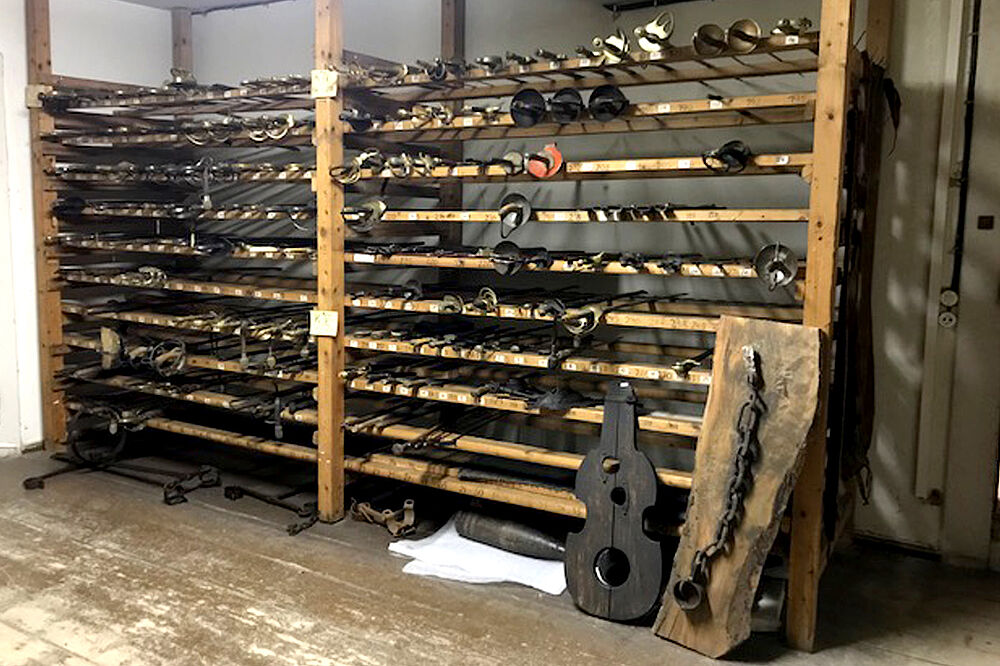
- Project leadership:
- Kulturstiftung Sachsen-Anhalt
- Partner:
- Deutsches Zentrum Kulturgutverluste
Completed Projects
Inventory of Halberstadt Cathedral
Halberstadt Cathedral is one of the most outstanding Gothic large-scale buildings of the Middle Ages. It was the main church of the oldest missionary diocese, which Charlemagne established at the eastern border of the Frankish Empire. Halberstadt was the only diocese in Central Germany that did not belong tot he Archbishopric of Magdeburg, which is also reflected in its artistic furnishings.
Following the Carolingian and Ottonian predecessor structures, a Gothic cathedral was built from the 13th century onwards, which was consecrated in 1491. Its interior features numerous architectural elements and significant sculptures made of wood and stone. World-famous are the triumph cross from the early 13th century and the medieval Halberstadt Cathedral treasury.
Since January 2016, a complete new inventory of the cathedral and its ancillary buildings has been underway. The aim is to produce an up-to-date, scientifically based presentation of the architecture and furnishings, which will be published in a two-volume edition.
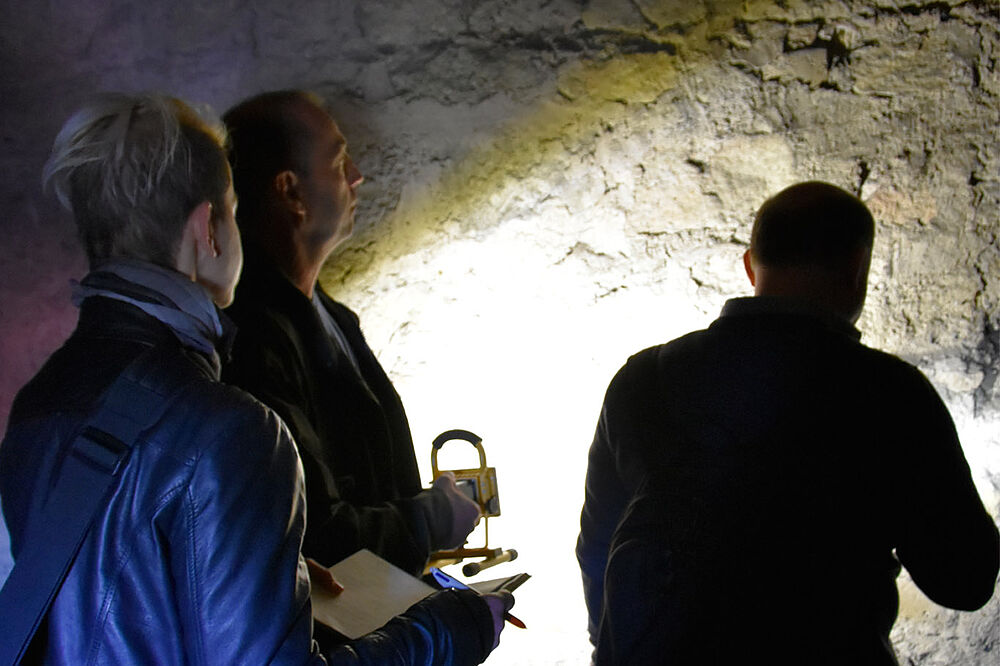
- Duration:
- 2017–2022
- Founding body:
- Land Sachsen-Anhalt
- Project leadership:
- Kulturstiftung Sachsen-Anhalt
- Project mgmt.:
- Dr. Heiko Brandl and Anja Seliger
- Partners:
- Landesamt für Denkmalpflege und Archäologie Sachsen-Anhalt
- Europäisches Romanik Zentrum e. V.
Scientific emergency conservation concept for the choir pillar sculptures in Halberstadt Cathedral
The original medieval furnishings in Halberstadt Cathedral also include 14 pillar figures in the high choir. The coloured stone sculptures were probably created between 1425 and 1475. Their critical state of preservation was discovered during restoration work in 2014. The colour settings in particular are severely damaged and in some cases endangered.
There are various reasons for this: The strongly fluctuating climatic conditions in the interior of the church fuelled this process, as did the negative environmental influences that were a consequence of the damage to the cathedral during the Second World War. Last but not least, the lack of restoration measures since the 19th century has led to this deterioration.
Following an extensive inventory, an interdisciplinary research project has now been launched to preserve the fragile colour layers of the medieval sculptures. Innovative technologies in restoration science are being used, which are being trialled and further developed on the choir sculptures.
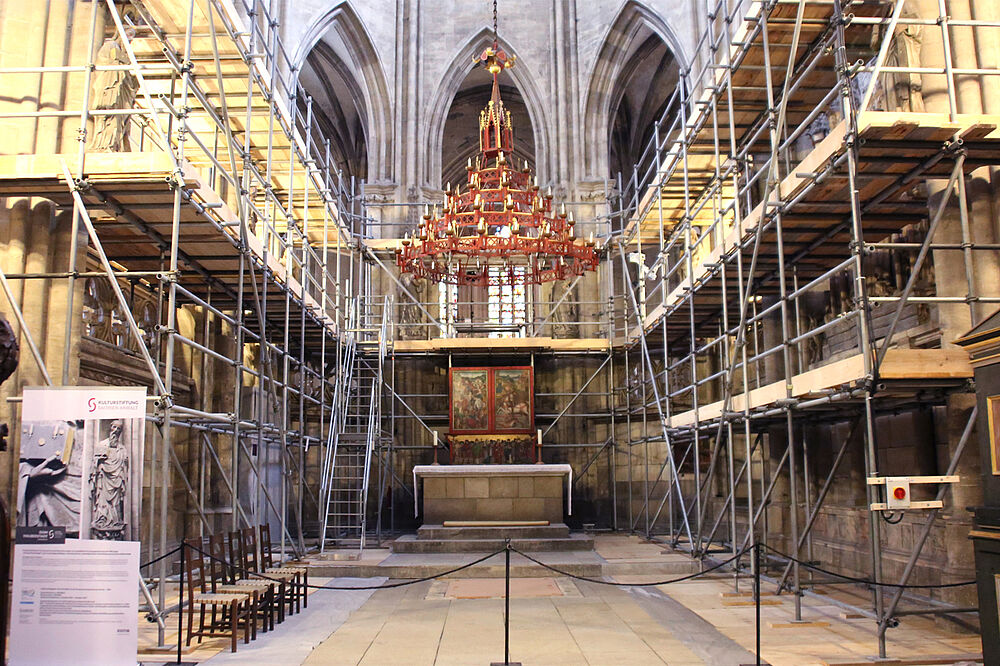
- Duration:
- 2016–2021
- Funding body:
- Deutsche Bundesstiftung Umwelt
- Project leadership:
- Kulturstiftung Sachsen-Anhalt
- Partners:
- Institut für Diagnostik u. Konservierung an Denkmalen in Sachsen u. Sachsen-Anhalt e. V. (IDK)
- Landesamt für Denkmalpflege und Archäologie Sachsen-Anhalt
- Dipl. Rest. Corinna Grimm Remus, Magdeburg
- Bauhausuniversität Weimar, Fakultät Bauingenieurwesen, Professur Modellierung und Simulation – Konstruktion
- Scientific Advisory Board:
- Technische Hochschule Köln
- Fachhochschule Potsdam
Inventory of the Magdeburg Cathedral
The Cathedral of St Maurice and St Catherine is the most important sacred building in Saxony-Anhalt and the largest archiepiscopal church in Germany completed at the end of the Middle Ages. Founded by Emperor Otto the Great, the cathedral was replaced by a completely new building after a fire in 1207. Its architecture and sculpture impressively document the transition to the Gothic period. Archbishop Dietrich performed the solemn final consecration in 1363 and the twin-towered west façade was completed in 1520 under Cardinal Albrecht von Brandenburg. The church, which has been Protestant since 1567, is still a defining landmark in the skyline of the state capital today.
An inventory book on Magdeburg Cathedral has long been a dream of researchers. The cooperation partners therefore agreed to completely re-record the architecture and furnishings. The two-volume work on Magdeburg Cathedral, published in 2011, presents the first complete scientific assessment of the cathedral's strcuture and interior. Research and heritage conservation now have a solid foundation for future work
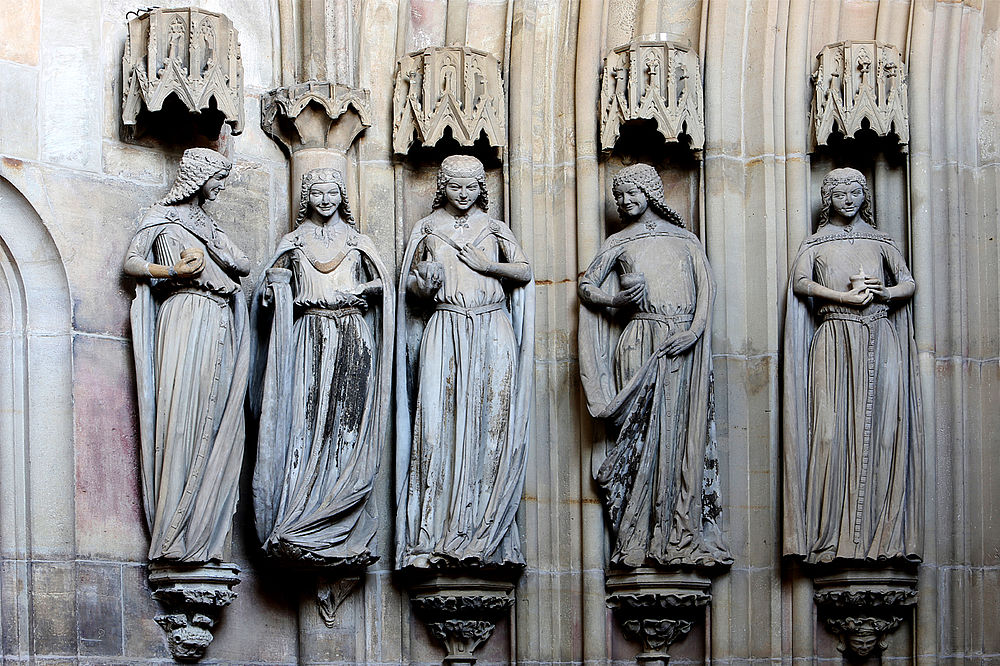
- Duration:
- 2005–2009
- Founding body:
- Land Sachsen-Anhalt
- Project leaderhsip:
- Martin-Luther-Universität Halle-Wittenberg, Institut für Kunstgeschichte, Prof. Dr. Wolfgang Schenkluhn
- Project mgmt.:
- Dr. Heiko Brandl and Dr. Christian Forster
- Partners:
- Kulturstiftung Sachsen-Anhalt; Landesamt für Denkmalpflege und Archäologie Sachsen-Anhalt
- Publication:
- Heiko Brandl/Christian Forster, Der Dom zu Magdeburg. Band. 1: Architektur. Band. 2: Ausstattung (Regensburg 2011). ISBN 978-3-7954-2462-6
Catalogue of Halberstadt manuscripts from the Middle Ages and the early modern period
Although the Halberstadt Cathedral treasury is among the most important medieval church treasures, significant gaps still remain in its scholary documentation. One of these gaps has now been filled for the medieval and early modern manuscripts.
The Cathedral treasury contains 39 manuscripts, while the Historical City Archive of Halberstadt holds 40. In a cross-institutional research project led by the Herzog August Library in Wolfenbüttel, these manuscripts were newly described and evaluated according to the guidelines of the German Resarch Foundation (DFG). This new cataloge replaces the ealier listing of Halberstadt mansucripts published by Gustav Schmidt in 1878/81.
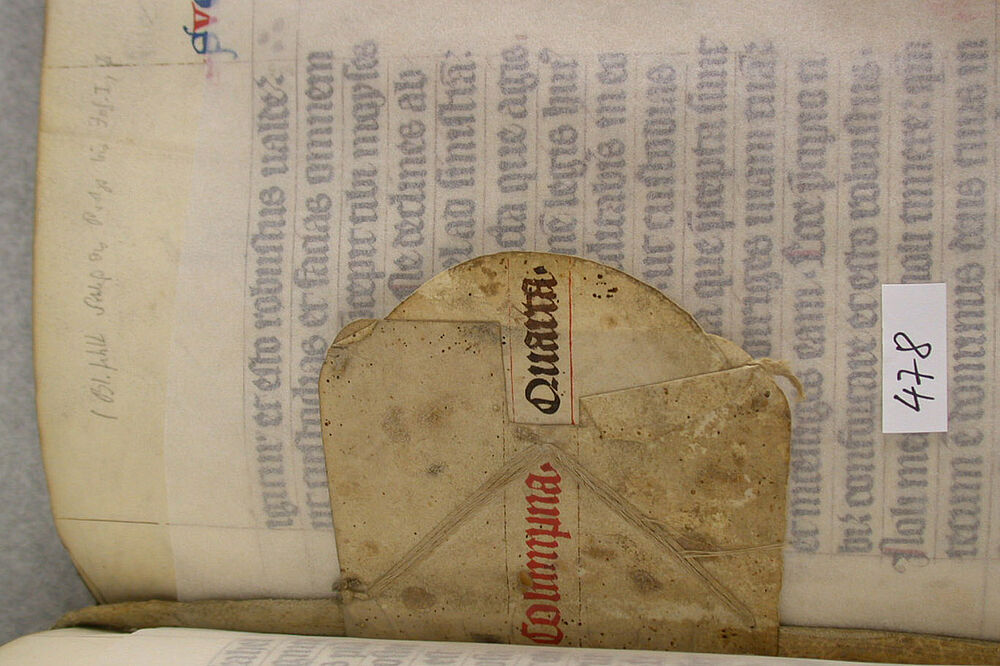
- Duration:
- 2007–2018
- Founding body:
- Deutsche Forschungsgemeinschaft (DFG)
- Project leadership:
- Herzog August Bibliothek Wolfenbüttel
- Project mgmt.:
- Dr. Patrizia Carmassi
- Partners:
- Kulturstiftung Sachsen-Anhalt; Stadt Halberstadt; Evangelisches Kirchspiel Halberstadt
- Publication:
- Patrizia Carmassi, Katalog der mittelalterlichen und frühneuzeitlichen Handschriften in Halberstadt. Verzeichnis der Bestände der Kulturstiftung Sachsen-Anhalt, Domschatz zu Halberstadt, und des Historischen Archivs der Stadt Halberstadt (Wiesbaden 2018). ISBN 978-3-447-10981-9
Model, practice-oriented evaluation and strategy program for the preventive conservation of nationally valuable art and cultural assets using the example of the Halberstadt Cathedral Treasure
The preservation of monuments and artworks is a continuous responsibilty. The Cultural Foundation of Saxony-Anhalt relies heavily on the principles of ‘preventive conservation’. This approach involves preventive, non-invasive, and long-term care strategies designed to identify and mitigate potential risks to buildings and their contents at an early stage.
One example of this is the Halberstadt Cathedral treasury. Here, the Cultural Foundation has established an interdisciplinary care model involving external specialists. It brings together conservators for the most important object groups and specialised scientists. The project also includes fundamental and lasting improvements to the storage conditions. The reopening of the Cathedral treasury in its new presentation in April 2008 marked a significant milestone in this process.
As part of a multi-year research project, the measures taken so far were reviewed, further optimisation potential was explored, and a targeted maintenance concept was developed to ensure the long-term preservation of the collection.
You can find the detailed final report here.
The detailed final report (in German) can be found here (pdf)
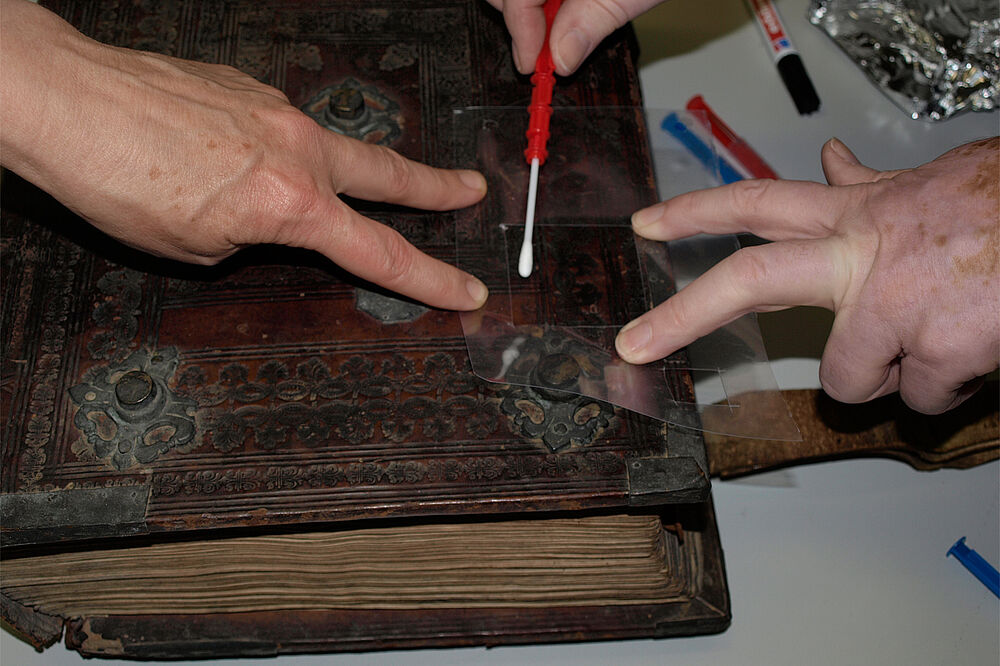
- Duartion:
- 2011–2015
- Founding body:
- Deutsche Bundesstiftung Umwelt (DBU)
- Project leadership:
- Kulturstiftung Sachsen-Anhalt
- Project mgmt.:
- Dr. Katrin Tille
- Partners:
- Landesamt für Denkmalpflege und Archäologie Sachsen-Anhalt
- Evangelischer Kirchenkreis Halberstadt
- Publication:
- Christian Philipsen/Katrin Tille (Hrsg.), Modellhaftes praxisorientiertes Evaluierungs- und Strategieprogramm zur „Präventiven Konservierung“ von national wertvollem Kunst- und Kulturgut am Beispiel des Halberstädter Domschatzes. Projektzeitraum 2012–2016 (Gommern 2016). ISBN 978-3-00-055525-1
Contact us
Enquiries
- Dr. Katrin Tille
- Forschung | Publikationen
- Kulturstiftung Sachsen-Anhalt | Dienststelle Stolbergsche Kurie
- Domplatz 33 a
- 38820 Halberstadt
- T: +49 3941 56749-11
- katrin.tille@kulturstiftung-st.de
